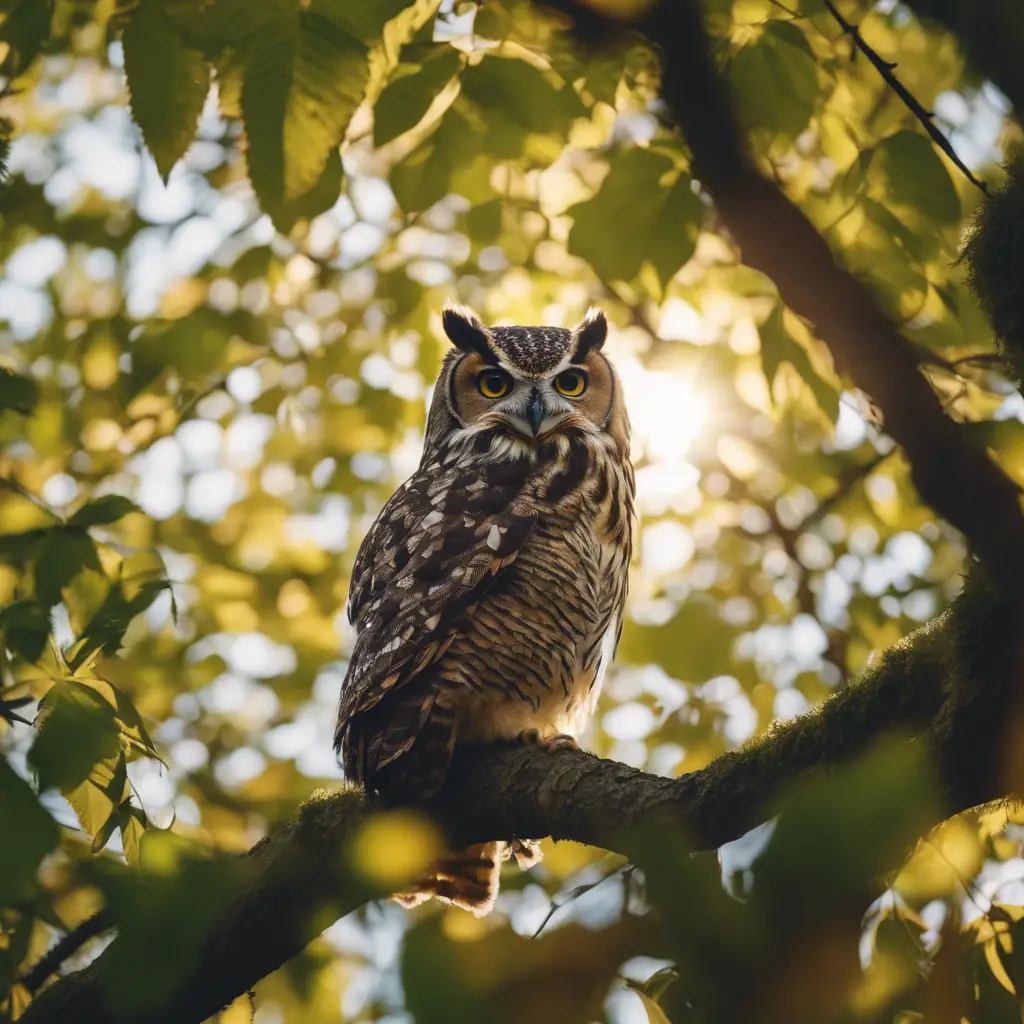In my experience as an ornithologist, I’ve spent countless dusks observing the silent descent of twilight and the owls’ transition to repose. I believe their slumber, often spanning hours in daylight’s refuge, is as enigmatic as their nocturnal vigils.
My connection with these creatures deepens with each hoot I decipher, each flight I witness. It’s not just the duration of their rest that fascinates me but the subtle interplay of nature’s demands that shapes it.
These feathery sentinels, in their wakeful dominion of the night, have taught me the profound complexities of sleep in the wild.
Key Takeaways
- Most owls sleep for 6 to 8 hours daily, adapting their sleep patterns to their nocturnal lifestyle.
- Owls engage in unihemispheric slow-wave sleep, allowing them to rest while staying vigilant against threats.
- Owls sleep during the day in quiet and secure locations, such as tree cavities or dense foliage, for safety.
- Sleep duration varies among owl species and life stages, with baby owls sleeping longer for development and some species responding to immediate environmental demands.
Owl Sleep Patterns Explained

While most owls rest for 6 to 8 hours daily, their sleep patterns are adapted to their nocturnal lifestyle, ensuring they’re alert and ready to hunt during the night. As nocturnal birds, owls sleep during the day, selecting quiet, secure locations like tree cavities or dense foliage to avoid predators. These owl species sleep upright on their perches, a posture that facilitates quick take-offs for hunting at night.
Uniquely, owls can sleep with one eye open, engaging in unihemispheric slow-wave sleep. This ability allows them to rest while staying vigilant against potential threats. Young owls, however, sleep lying down, giving their growing muscles the necessary respite.
These sleep patterns aren’t just about the hours of sleep but also about survival and efficiency in their ecological niche.
Nightly Habits and Daytime Rest

Understanding that owls typically sleep during daylight hours to conserve energy for nocturnal activities, it’s important to explore how they spend their nights and the necessity of daytime rest for these predators. Nocturnal owls are active when the sun sets, engaging in hunting, mating, and territory defense. These nightly habits demand a high level of alertness and energy, which is why owls sleep during the day, in safe, secluded spots away from potential threats.
Owls are nocturnal, meaning they’re adapted to a life in the dark. Their sleeping habits are therefore inverted compared to many other animals. Owls need around 12 hours of sleep per day, and even the occasional diurnal owl will find time to rest during quieter daylight periods to maintain their health and vigor.
Sleep Duration for Different Species

Owls’ sleep duration varies among species, with most requiring about 6-8 hours of daily rest, although this can fluctuate due to environmental factors and life stages. While adult owls sleep during times that align with their nocturnal or diurnal nature, baby owls sleep longer to support their development.
Some species, particularly those that are cathemeral, mightn’t adhere to a strict sleep pattern, responding instead to the immediate demands of their environment, such as food availability or breeding activities.
Owls often sleep in secluded, sheltered spots that differ each night, ensuring their safety from predators. Remember, the sleeping owl’s need for rest is as essential as its need for food and shelter, making the sleep duration for different species a critical aspect of their survival.
Factors Influencing Owl Sleep Cycles

Just as the need for rest is essential to an owl’s survival, various factors significantly impact their sleep cycles, including food availability, breeding habits, environmental conditions, and predation risk.
Owls tend to sleep during the day, needing around 12 hours of rest. They often sleep standing, utilizing a mechanism in their legs to lock in place, preventing falls. Great horned owls and others may sleep with one eye open, keeping half of their brain alert to potential dangers. This adaptation allows them to be active at night, when they hunt.
During breeding season, owls sleep in the nest to protect their young. They adjust their sleep cycles based on food scarcity or abundance, and environmental conditions like extreme temperatures can also dictate their roosting choices for optimal rest.
Frequently Asked Questions
Do Owls Stay up All Night?
No, you won’t find owls awake all night. They’re nocturnal, but they still need rest and typically sleep for several hours, even during their active periods at dusk and dawn.
Do Owls Sleep Standing Up?
You’re right to wonder; owls do sleep standing up, perched securely with their strong talons gripping branches, always ready to react to threats even while they’re catching their daytime z’s.
Where Do Owls Go in the Daytime?
You’ll find owls resting in tree cavities, on branches, or in other secluded spots during the day, using these safe havens to sleep and stay hidden from potential threats until nightfall.
What Are 5 Interesting Facts About Owls?
You might find it fascinating that owls can rotate their heads 270 degrees, have asymmetrical ears for precise hearing, and their silent flight aids in stealthy hunting. They’re also symbolic in various cultures.
Conclusion
In summary, owls’ sleep patterns are complex and species-specific. You’ll find they typically rest intermittently, totaling several hours daily. These periods are influenced by food availability, safety, and breeding cycles.
Whether they’re snoozing in a secluded tree hollow or a quiet barn loft, owls have adapted to maximize their rest, ensuring they’re alert for their nocturnal or cathemeral activities.
Remember, an owl’s need for sleep is as nuanced as the ecosystem it inhabits.

An avid ornithologist, zoologist and biologist with an unwavering passion for birds and wild animals.
Dr. Wilson’s journey in ornithology began in childhood and led him to obtain a Ph.D. in Ornithology from the prestigious Avian Research Institute. He has worked closely with renowned experts in the field and conducted extensive research and field studies globally.


